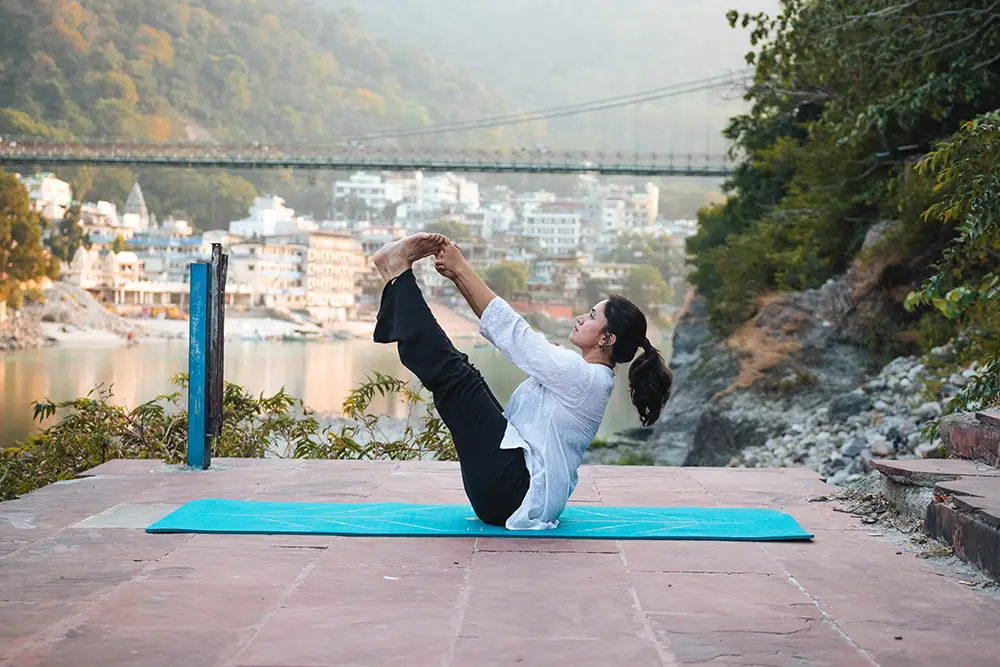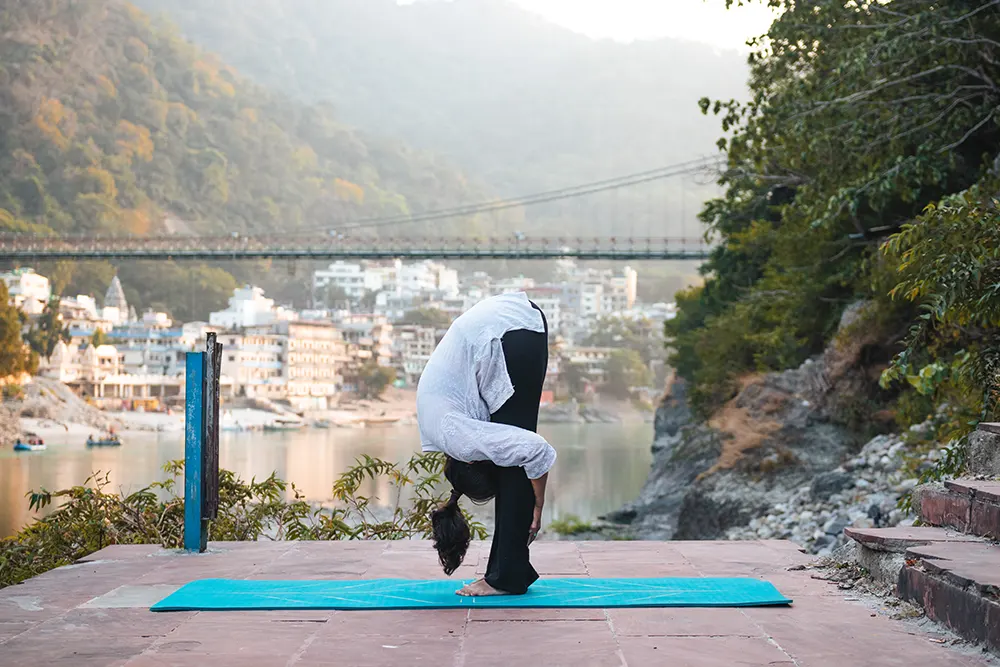Ashtanga Vinyasa Yoga: Poses, Asana, Benefits – A Complete Guide

K. Pattabhi Jois founded Ashtanga Vinyasa Yoga during the twentieth century. He acquired his knowledge from his Guru, Shri Tirumalai Krishnamacharya. This style of asana is dynamic. A flow is created through the synchronization of breath and posture.
- The Primary series: Yoga Chikitsa (Yoga for Health or Yoga Therapy)
- The Intermediate series: Nadi Shodhana (the nerve purifier)
- The Advanced series: Sthira bhaga (centring of strength)
There are core concepts for Ashtanga vinyasa yoga practice, encompassing the three levels of purification: the body, nervous system, and mind. They are supposed to be performed in conjunction with each other. The second (Intermediate) series is called Nadi Shodhana, which means nervous system purification. It strengthens and cleanses the nervous system and certain energy channels. The series follows the same progression of sun salutation, standing sequence, sitting sequence, and inversions, adding back-bending asana and advanced yoga postures. The advanced series has four variations. From Advanced Series A to Advanced B, Advanced C, and Advanced D. The rigorous practice of Ashtanga Vinyasa requires knowledge of many years to reach the advanced stage.
Ashtanga Vinyasa Yoga emphasizes a key component known as a Tristana (Three places of action or attention) and Vinyasa which is a combination of breath and movement according to Jois.
There are core concepts for Ashtanga yoga practice, encompassing the three levels of purification: the body, nervous system, and mind. They are supposed to be performed in conjunction with each other.
Tristana means the three places of attention/action;
- Breathing system
- Drishti
- Bandha
Breath – Pattabhi Jois recommends remaining in a posture for five to eight breaths. There is constant inhalation and exhalation.

Drishti is the point where one focuses the eyes while practising asana. In the Ashtanga yoga method, there is a prescribed point of focus for every asana.

There are nine Drishtis:
- The nose
- The space between eyebrows,
- Navel
- Thumb
- Hands
- Feet
- Towards the sky
- Right side
- Left side
Bandha means ‘to bind’ or ‘to lock’. These locks activate the flow of energy in our bodies. Our energy flow moves upward from our spine into 72000 nadis (energy channels). Bandhas are known as energy centres. They are key elements of asana practice which help to create and sustain energy throughout our body which we need in the practice. Using bandha during practice creates ‘lightness’ while practicing challenging poses.

There are six bandhas:
- Mula bandha
- Jalandhara bandha
- Uddiyana bandha
- Hasta bandha
- Pada bandha
- Maha bandha
Only when all these stages are applied and achieved does the lotus within us blossom during the practice of Ashtanga Vinyasa as the practice is filled. The breath is the foundation of vinyasa and the alignment of the body in asana is achieved through bandha.
Vinyasa means a flowing sequence that connects each asana. The modern Vinyasa yoga co-ordinates the breath with the vinyasa transition movements between the asana. The purpose of Vinyasa is to purify the blood. This is why Tristana is the core understanding of the practice of Ashtanga vinyasa.
Ashtanga Vinyasa Primary Series

The primary series of Ashtanga Vinyasa yoga is a precise sequence of postures. The sequence was created by Sri K. Pattabhi Jois in Mysore, India. They are the foundational series for Ashtanga Vinyasa yoga. The series consists of 75 yoga poses which take about 1 hour and 30 minutes to finish according to individual paces. It begins with sun salutations A and B, and moves towards standing postures, sitting posters, inversions, and backbends before relaxation. These postures are designed to realign the spine, detoxify the body, and build strength, flexibility, and stamina. It is also considered the most heating yoga practice for the body, because of which people with High blood pressure are asked to keep the pace at their level.
Ashtanga Vinyasa Intermediate Series

The other five Ashtanga vinyasa sequences follow this primary series. The second series is called Nadi Shodhana which means nervous system purification. It strengthens and cleanses the nervous system and certain energy channels. A student is only eligible to practice the intermediate series once they have mastered the primary series. The series follows the same progression of sun salutation, standing sequence, sitting sequence, and inversions, adding backbends and some advanced yoga postures.
Ashtanga Vinyasa Advanced Series

The third series of Ashtanga Yoga builds on the first two series, it is practiced with a deeper awareness of the body and a proper energy flow. This particular series focuses on sthira bhaga or ‘divine stability’ of the body and mind. Students experience transformational change while practicing the Ashtanga Vinyasa series. Their strength, flexibility, concentration, and energy with the practice increase, changing their persona and perception. This particular series focuses more on arm-balancing poses which require a lot of strength from the core.
Why to Practice?
If practiced to its true meaning, Ashtanga Vinyasa Yoga benefits the Mental and Physical body. The series is scientifically designed, from Sun Salutations to jumping into Vinyasa flow to help you connect with your breath. The monkey mind jumps from one place to another at all times. Hence, the asana practice which moves with a specific breath allows an individual to be in the present. Gaining strength in your muscles and mobility in your joints are the beginner’s advances of a practitioner. True growth begins when you align your thoughts with your asana practice and let the mind be controlled for a change.
Practicing Ashtanga at home can be challenging for beginners without guidance. So the first step is to look for a teacher who can assist you and invest in props such as blocks, bolsters, and straps. Any practice of asana requires consistency. This discipline gets instilled with investment in a good teacher and resources that help you envision yourself in the final postures.
Conclusion
The practice of Ashtanga Vinyasa Yoga is empowering and gratifying. The intensity of the practice allows an individual to improve their concentration and gain strength in their muscles. Daily practice of Ashtanga Vinyasa can help an individual reap physical benefits such as improved endurance, Strong muscles, mobility in the joints, and flexibility.
One can refer to Yoga Mala: The original teaching of Ashtanga Yoga by Master Sri K. Pattabhi Jois for a deeper understanding of Ashtanga Yoga.







